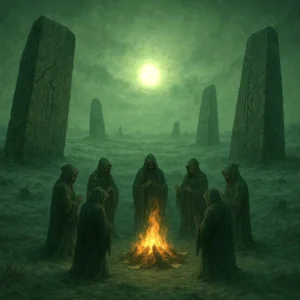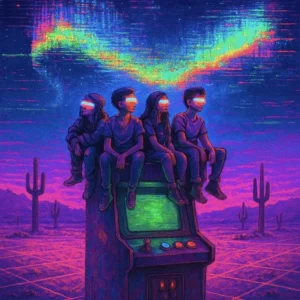With today’s evolving technology some took chances in putting optically transitioned images and sounds to the new age of music streaming.
Audio Visualizer/Music Visualizer has delivered a ruling attraction through its communicative waveform interpretation of sounds being seen in motion graphics. In its most practical sense, this modern feature in the music industry allows its listeners to see their sounds. Signal properties such as frequencies and dynamics are visualized through mapping onto vivid colors and form, and in order to elaborate some of the music’s intricate properties such as varying time is the addition of movement and three-dimensional effects. Thus giving rise to the phrase “what you see is what you hear”. The visual outcome often relies upon common variables of loudness and frequency ranges giving audio visualizers a great stand as an overpowering element in today’s music consumption.
How did audio visualizers emerge?
The introduction of a video music product released by the game manufacturer Atari Inc. back in the 1970s has paved the way for today’s success of a modern and digitized sound interpretation. Known as the Project Mood during the development stage, the company introduced a device resembling-stereo amplifier that is to connect to a television and stereo system pulsating brightly colors, shapes, and free forms on the screen as the music plays. Unlike us who have the ability to enjoy the music without difficulty, the viewers back then would have to program the disco application by themselves, a clever way to integrate music and video games into one appliance. Such inventions sparked contemporary approaches to the music industry back in the days. Audiovisuals would have been curious discoveries set into casual events and art exhibits if not for music.
The development extended vastly in an imaginative approach within today’s present experience linking its likely success of the audible representation. One of which you may find “Trap Music” on YouTube(an online video sharing platform) that exemplifies an influential hype to the emerging audio visualizer. It was described to have given the people/listeners a reflecting moment between visions over sound interpreting unexpressed emotions to that particular music.
What’s in it for the listeners?
Audiovisual is a vital component of effective communication. More often than not, the importance of using such a tool overlooks how it can add a greater impact on the listener’s retention. It is the same reason why audiovisuals are being invested in art exhibits because humans are able to retain the information longer when more senses are used at the same time, making them retain the information even three days even after the event, Consequently, musicians and artists alike are finally seeing the vitality on the use of audio visualizers apart from music video because it is an uncommon, yet effective way for them to be unconsciously remembered and to be discovered. This is relevant from the study of “The role of live visuals in audience understanding of electronic music performances”, wherein concerts/live performances with live audiovisuals had grown great contributing participation from the majority of those audiences.
Music Video is Not the Only Branding Tool Anymore
The creative way to digitize the sound spectrum gives a new branding option as a promotional tool for artists and musicians who wish to leverage their identity as well as to attract a community of people. It is almost noncompetitive and disappointing when devoted fans come to realize that their favorite artists don’t offer more than just the “music”. Avid listeners would always want more such as music videos, album covert arts, and band photos. In this Information age where digital media prevails, giving your listeners something that is timely would set you apart from other music competitors, and lead you to an increase of engagement traffics.










